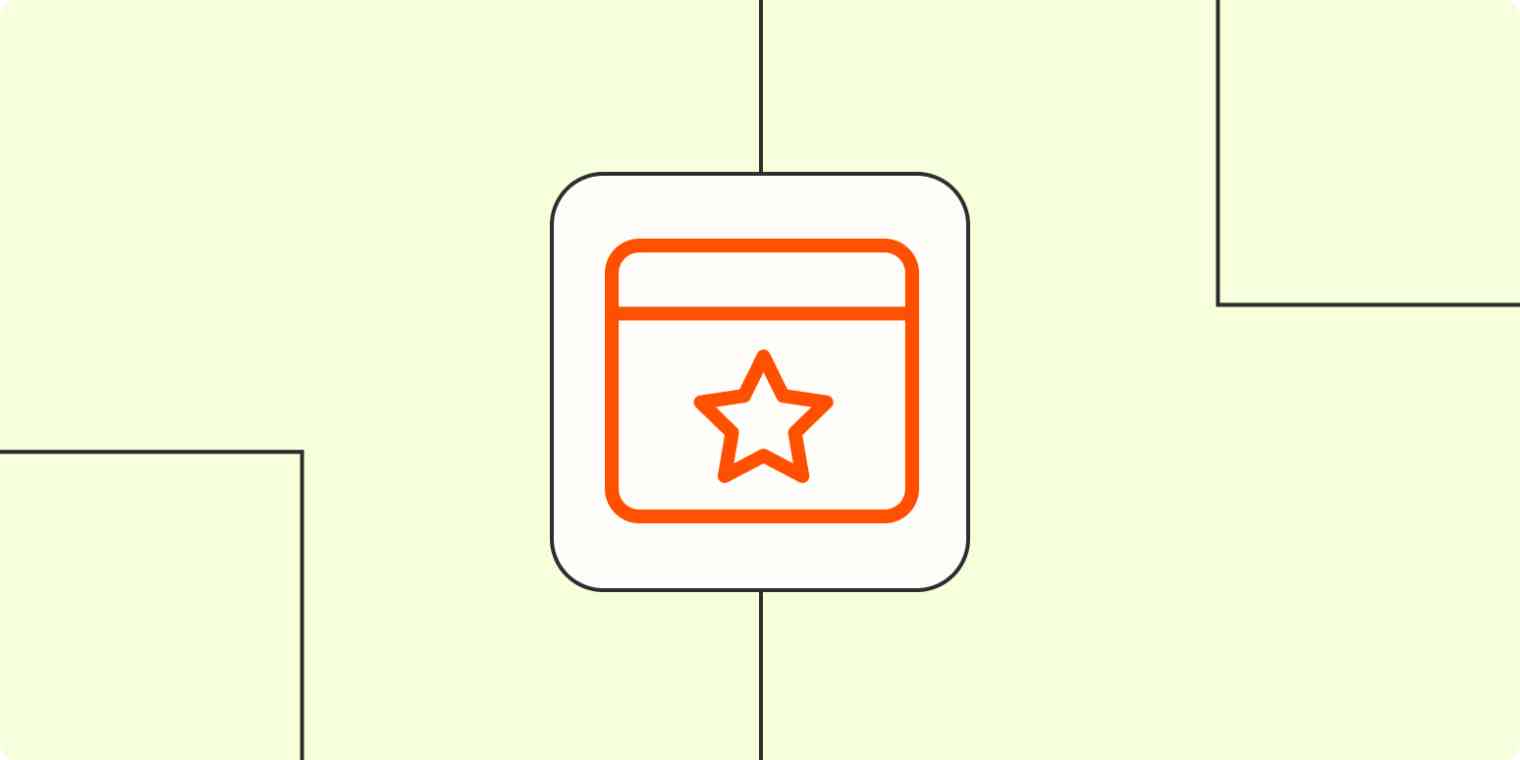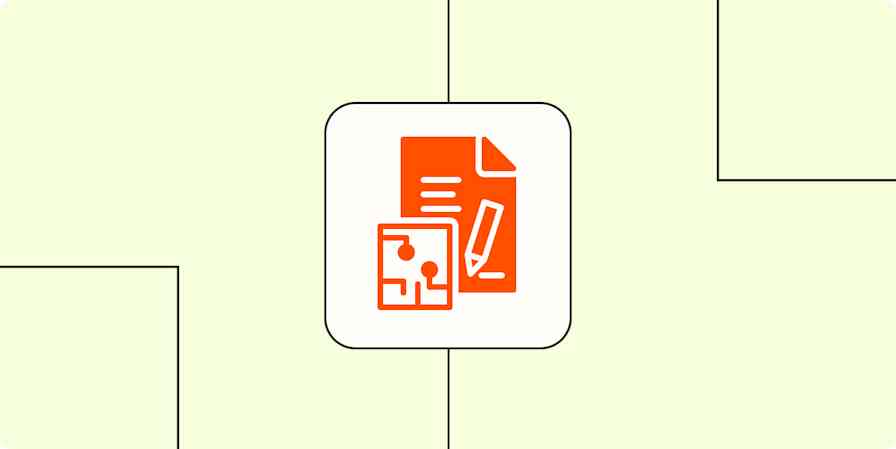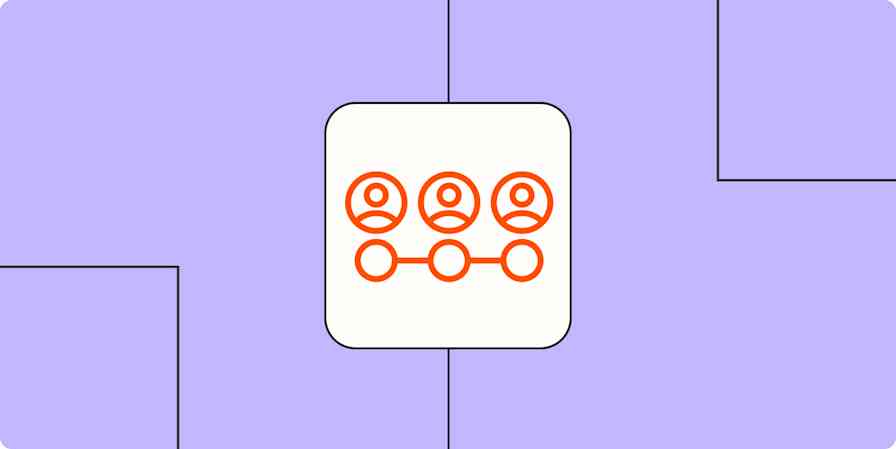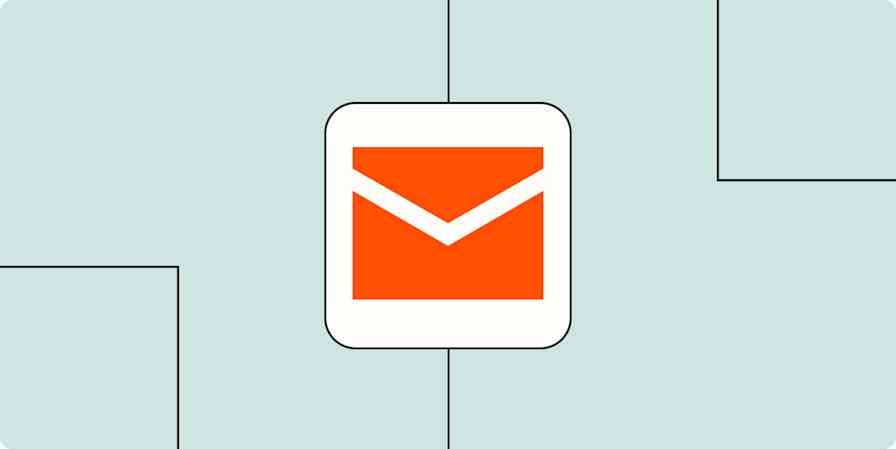Customer experience feels like such a fuzzy thing to measure. How can you get a metric that accurately reflects people's loyalty to your brand? The answer: NPS, the Net Promoter Score.
NPS is a way to scientifically measure customer loyalty, but it also helps you grow your customer base and encourage your existing customers. By identifying the customers who love your products or services the most, you'll be able to turn your passive fans into active promoters.
The best part: it only takes two questions to calculate your Net Promoter Score.
Table of contents:
What is NPS?
The Net Promoter Score® (or NPS) measures customer experience and loyalty using a two-question survey. The first question: How likely is it that you would recommend my brand/product/service to a friend or colleague? (Answers are based on a 0–10 scale.)
Here's an example email you might send to a customer to get their Net Promoter Score:
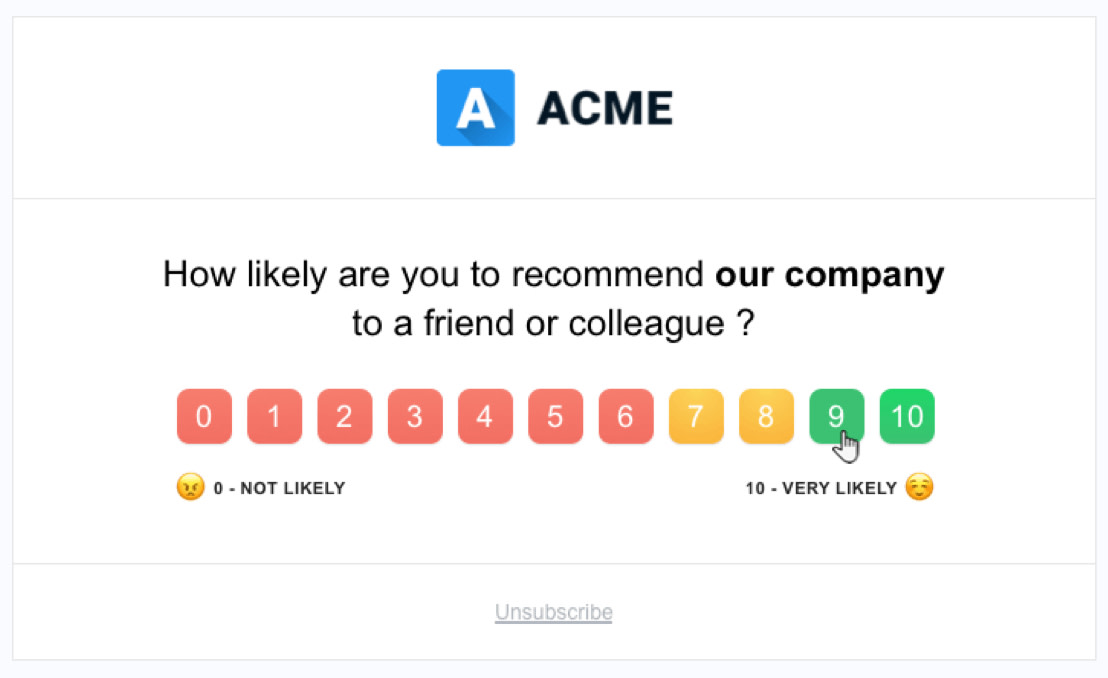
It's really that simple.
For anyone who answers the first question, you'll send a second question: What's the most important reason for your score? You could ask it in a follow-up email or show it on a web page after customers click the survey question in the first email. Here's how that could look:
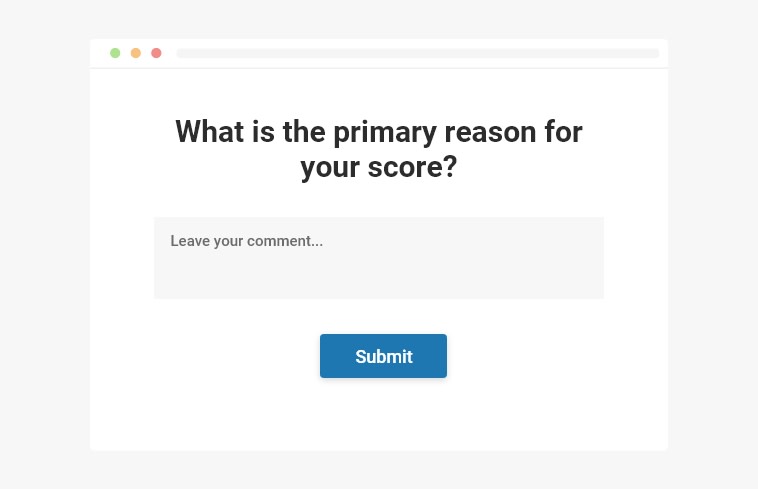
That's all. Ask those two questions, and you'll have the data you need to calculate your Net Promoter Score—and act on it.
For the respondent, it's easy to answer. In fact, you can even ask this question in an email or text message and get a response without sending them to a website. That means you're more likely to get more responses and have a bigger data set to work with.
Every time you ask someone to do something (click somewhere, reply to an email, etc.), you create a barrier to your goal, and intrinsically fewer people will complete it. A general rule of thumb from our experience of sending out over five million surveys at Retently: with each added click or question, your chances of someone opting out of a survey drop 50%. So if you ask only two questions, then you can expect a 25% response rate. You'll possibly get even higher results, as the average response rate for users of our automated NPS platform hovers around 40%. That matches up with studies conducted by Bain & Company about the effectiveness of NPS and its two simple questions.
Net Promoter Score calculation
NPS math is actually pretty easy, but you'll still want to break out the calculator. Here's how it works:
1. Calculate the total number of respondents who replied. 2. Calculate the total number of respondents who gave you a 9 or 10 (promoters). 3. Calculate the total number of respondents who gave you a 0 to 6 (detractors).

Before making the final calculation, you might have a couple questions:
What about respondents who gave a 7 or 8?
Though both good scores, these people aren't fanatical one way or another, so we leave them out of the final score.
Why are respondents who gave a 6 considered detractors? Isn't 6 a good score too?
Think about it as the person giving a 6. If you gave a "6" to someone else's product/service, you likely think there's something wrong with the product or the way a company operates. If someone asked you about it, you might bring up its problems instead of its benefits. Not good.
Also, negative sentiment, even to a small degree, has much more impact than positive sentiment. We all experience this every day, whether in personal conversations or product reviews online.
With that out of the way, it's time for the final calculation: subtract the percentage of detractors from the percentage of promoters.
Net Promoter Score = % Promoters – % Detractors
Let's say you get the following scores as responses: 10, 9, 8, 7, 6, 5, 4, 3, 2, 1. Only two out of 10 were promoters (20%), and six out of 10 were detractors (60%). That makes your NPS score -40.
What is a good NPS?
NPS scoring is different from what you're used to, so don't start closing up shop when you get a score of 20. Remember: it's not just out of 100.
Here's how NPS scoring goes:
The worst score you can get is -100. If everyone gives you a 0, 100% of people are detractors, hence -100.
The highest score you can get is +100. If everyone gives you a 10, 100% of people are promoters, hence +100.
With that, any score above zero is good, anything above +50 is excellent, and anything over +70 is considered world-class.
Is NPS accurate?
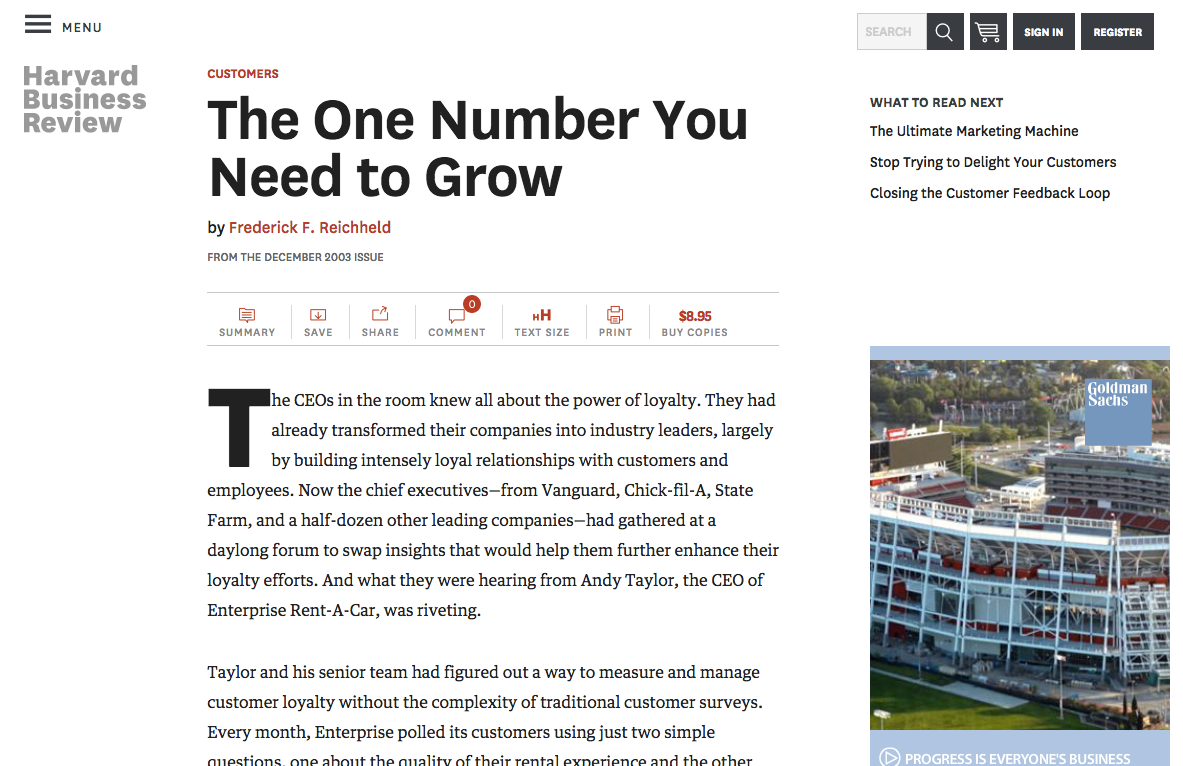
In 2003, business strategist Fred Reichheld published an article in Harvard Business Review titled "The One Number You Need to Grow." It discussed how the Net Promoter Score was developed by testing various questions to find which one was best aligned with customer loyalty. NPS was then developed further and eventually trademarked by Fred Reichheld along with Bain & Company (a global management consulting firm) and Satmetrix (a customer experience management platform). And in the decade since that article was published, NPS has become one of the most popular loyalty surveys in use, in large part because of Reichheld's bestselling book The Ultimate Question 2.0, which expanded on use cases for NPS. Hundreds of major companies, from GE to the BBC to Home Depot, have incorporated NPS surveys into their regular course of business.
Bain & Company argues that it's an extremely reliable metric. But critics of NPS say there isn't any connection between NPS and customer loyalty, that NPS fails to predict customer loyalty, and that it isn't any better than other loyalty-related surveys. For example, a study presented at the Annual Conference of the World Association for Public Opinion Research in Berlin titled "Measuring Customer Satisfaction and Loyalty: Improving the 'Net-Promoter' Score," the authors found that the 0–10 point scale advocated by Reichheld had the worst predictive value of the scales tested.
In the end, the value of NPS comes from how you use it.
How to implement a Net Promoter Score survey
At Retently, we frequently receive the following four questions about how to do NPS:
1. So, I can just send an email?
Yep. Simply ask the main question (How likely is it that you would recommend my brand/product/service to a friend or colleague? Answers are based on a 0–10 scale.), and tell people they can reply to the email directly.
Of course, you could send them a link to an NPS form in a form builder or survey app, but the response rate will likely not be as high.
The survey won't feel as personal to your customers, either, especially when you follow up with the second question: What's the most important reason for giving us that score? If you ask that in a personalized email, people will be more likely to give you honest feedback.
Another option is to use a service designed for NPS. Our app, Retently, will help you send the emails and follow-up questions, so you won't have to put in as much manual effort collecting responses, tracking replies, looking at trends, and reviewing historical score changes over time.
2. How many customers should I survey at a time? How often?
Lots of companies send their surveys—whether a full-length survey or a simpler NPS email—to all their customers at the same time once every quarter. But we suggest you spread out the survey and send it to 1/90th of your users every day for 90 days. So if you have 1,000 users, say, you would send around 11 surveys per day.
Here's why: if you send all the surveys at once, the responses will only represent that moment in time. Add new features or change the pricing of your products, for example, and your score won't take that into account for another three months. Spread the surveys out, and you can act on the feedback and see your score change in nearly real-time.
Logistically, sending out a few a day is harder unless you use an automated NPS platform that supports it. But the benefits might make it worth spending a bit more time setting up your surveys.
3. Do I send NPS surveys immediately after someone places an order (for transactional businesses)?
It depends on what you want to measure. If you want to understand customer loyalty for your shopping cart process, sending a survey right after someone orders can be an effective way to measure that since they'll have the experience fresh in their memory.
However, if you want to know how likely people are to recommend the product they purchased (the main purpose of the Net Promoter Score), you will want to schedule the survey a bit further out. Give your customers enough time to receive and start using the product without completely forgetting that you exist. They'll then be able to give you relevant, actionable feedback.
4. Do I send an NPS survey after every purchase?
Again, it comes back to what you want to measure: loyalty for individual products they are purchasing, or loyalty to your company in general.
When our customers ask us this question, we typically recommend measuring brand loyalty over individual product loyalty. That means no matter how many products your customers purchase (0 or 1,000), you send them an NPS survey once a quarter—something that's already standard for subscription-based businesses. This helps you measure what people think of your company overall, not just about each individual purchase.
We've found that surveying customers once a quarter on a rolling basis is the most effective frequency that's not too invasive. Wait longer and you can miss critical feedback or changes in customer sentiment that can lead to churn; send it more often and you may just annoy people.
12 example NPS questions
There are two essential NPS questions: the first is a quantitative rating question, and the second is a qualitative open-ended question. Here are a few examples of each type.
Example quantitative NPS questions:
On a scale of 0 to 10, how likely are you to recommend [company or product name] to a friend or colleague?
On a scale of 0 to 10, how likely are you to recommend our customer support service to others?
Based on your recent purchase, how likely are you to recommend us to your friends and family? (0-10)
Considering your experience with us so far, how likely are you to recommend [company or product name] to a friend or colleague? (0-10)
Now that you've received your [product], how likely are you to recommend [company name] to a friend or colleague? (0-10)
How likely are you to recommend [company name] as a potential workplace to your friends? (0-10)
Example qualitative NPS questions:
What is the most important reason for your score?
What do you love about our [product or service]?
Which features do you value the most?
What was missing or disappointing in your experience with us?
How can we improve your experience?
What do you like most/least about [company or product name]?
How to improve your NPS response rate
Asking questions is one thing, but what's the best way to get people to respond? Here are four ways to improve your NPS response rate:
Segment your audience. Try sending emails at different points in the customer journey; e.g., immediately after purchase/delivery, after abandoning a shopping cart, 2-3 weeks after purchase, or several months later.
Personalize your follow-up questions. Create different questions for the different types of respondents: detractors, passives, and promoters.
Keep the questions simple. Avoid jargon, and use everyday wording so that it's quick and simple for everyone to reply.
Keep the survey short. Keep it to one rating question and one open-ended question, so people stay engaged and complete the survey.
Always follow-up after an NPS survey
While NPS is generally a useful metric to track, I find it to be by far the least interesting part of measuring NPS. This is because you should never treat customers as a number. No matter what your score is, when someone takes time out of their day to give you some feedback, it's an opportunity to engage and deepen your connection with them.
Net Promoter Score isn't just about predicting customer loyalty. Loyalty isn't earned with a number: it's earned by creating authentic relationships with people post-survey. If you don't engage your customers strategically based on their sentiment and feedback, there won't ever be an impact that connects to your bottom-line metrics.
Loyalty isn't earned with a number. Loyalty is earned by creating authentic relationships with people post-survey.
Your Net Promoter Score gives you the opportunity to open the conversation with customers, improve your business, products, and services, and then perhaps see your satisfaction score grow. NPS is a means to an end—to a happy ending for you and your customers—not an end in and of itself.
And so: the magic of NPS is not in the score; it is in the follow-up. If you master the art of the NPS follow-up, you can get people to publicly review and recommend your product or service, or discover new business opportunities and product features you hadn't thought of. You can also proactively reduce churn with a higher success rate than any other method.
For a 9 or 10 score, the response is pretty straightforward. Since they're volunteering the fact that they are happy or willing to recommend your service, you can naturally write a response like this:
Thank you for your score of 10! You made our day. If you have just 30 seconds, would you be willing to write a quick review to make it easier for other people to discover the service? Here's a URL: …
For other scores, there are equally effective scripts you can use to kick off a deeper conversation. Take a look at our post-survey follow-up templates for inspiration.
This was a guest post from Chad Keck, the co-founder and CEO of Retently (formerly Promoter.io). Want to see your work on the Zapier Blog? Check out our guidelines and get in touch.
Related reading:
Net Promoter, Net Promoter Score, and NPS are trademarks of Satmetrix Systems, Inc., Bain & Company, Inc., and Fred Reichheld. This article was originally published in 2017. The most recent update, with contributions from David Hartshorne, was in November 2023.
